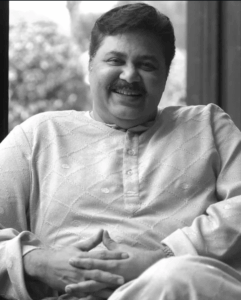Satish Shah Biography: Age, Early Life & Background, Net Worth & Achievements. The Unassuming Maestro of Indian Comedy
Who is Satish Shah?
Today let’s talk about Satish Shah Biography : When we think of Indian television comedy, one name that inevitably comes to mind is Satish Shah. Born on June 25, 1951, in the bustling city of Mumbai, this remarkable actor has carved a niche for himself in the hearts of millions of Indians. His journey from a middle-class Gujarati family to becoming one of the most recognizable faces on Indian television is a story of talent, perseverance, and an unwavering commitment to the craft of acting.
Satish Shah Biography
The Early Days: A Dream Takes Shape
Growing up in Mumbai during the 1950s and 60s, young Satish Shah was like many other boys in the city, except for one thing – he had an insatiable passion for performing. Unlike many actors who would later become his contemporaries, Shah didn’t come from a film family. There were no industry connections, no godfather to open doors. What he had was raw talent and an early fascination with theater that would shape his entire career.
His school days were marked by active participation in dramatic productions and cultural activities. While other children might have seen these as mere extracurricular activities, for Shah, they were glimpses into his future. He pursued his education in Mumbai, but it was always clear where his heart lay – on the stage, in front of an audience, bringing characters to life.

Satish Shah Theater Foundation
Before Satish Shah became a household name on television and cinema screens, he spent years honing his craft in the theater circuit of Mumbai. This period, though less glamorous than what would follow, was perhaps the most crucial in his development as an actor. He associated himself with several prominent theater groups and performed in numerous plays, working in both Gujarati and Hindi productions.
Theater taught Shah something that would become his greatest strength – the art of subtlety. Unlike cinema, where close-ups can capture the smallest facial expression, theater demands a different kind of presence. It requires an actor to project emotions to the last row while maintaining authenticity. This training ground gave Shah his impeccable comic timing and the ability to deliver nuanced performances that would later define his career.
What’s remarkable is that even after achieving tremendous success in films and television, Shah never abandoned theater. He continued to perform on stage, maintaining his connection to the roots of his artistry. This dedication to theater throughout his career speaks volumes about his respect for the craft and his understanding that an actor must constantly sharpen their skills.
Satish Shah Breaking Into Films
The 1970s marked Satish Shah’s entry into Hindi cinema, though his initial years were far from spectacular. Like many character actors, he started with small, often forgettable roles. These were the years of struggle, of waiting for that one opportunity that would showcase his true potential. But Shah was patient, understanding that building a career in cinema required both talent and timing.
His breakthrough came in 1983 with the cult classic “Jaane Bhi Do Yaaro,” directed by Kundan Shah. This satirical comedy, which has since achieved legendary status in Indian cinema, gave Satish Shah a platform to display his gift for subtle comedy. Though not the lead role, his performance was memorable enough to be noticed by audiences and filmmakers alike.
The 1990s saw Shah establishing himself as a reliable character actor in Hindi films. His role in “Kabhi Haan Kabhi Naa” in 1994, where he played Shah Rukh Khan’s father, demonstrated his ability to bring warmth and authenticity to parental roles. He appeared in “Yes Boss,” “Hum Tumhare Hain Sanam,” and later in “Main Hoon Na,” each time adding value to the film with his presence.
What distinguished Shah in his film career was his refusal to be typecast. While he excelled at comedy, he was equally comfortable in dramatic roles. He brought the same level of commitment to every character, whether it was a comic sidekick or a serious father figure. This versatility ensured that he remained in demand throughout his film career.
Television: Where a Legend Was Born
If cinema gave Satish Shah recognition, television made him a legend. The year 1984 marked a turning point not just in Shah’s career but in Indian television history. “Yeh Jo Hai Zindagi,” directed by Kundan Shah, premiered on Doordarshan and took the nation by storm. Shah played the lead role of a middle-class office worker juggling the pressures of work and home life.
The show was groundbreaking for several reasons. It was one of the first Indian sitcoms that dealt with everyday situations with humor and warmth. At a time when television was still finding its identity, “Yeh Jo Hai Zindagi” showed that the medium could create content that was both entertaining and relatable. Shah’s performance was the heart of the show. His portrayal of a harried husband and father dealing with life’s daily challenges resonated with millions of Indians who saw their own lives reflected on screen.
The show made Satish Shah a household name. People began recognizing him on the streets, relating to his character’s struggles and triumphs. It established him as one of the finest comic actors on television and proved that an actor didn’t need cinema to achieve stardom.
But Shah’s greatest television triumph was yet to come. In 2004, twenty years after “Yeh Jo Hai Zindagi,” he took on a role that would define his legacy – Indravadan Sarabhai in “Sarabhai vs Sarabhai.” This sitcom, which depicted the lives of an upper-middle-class family in Mumbai, became a cult phenomenon. Shah’s character, the eccentric patriarch with his obsession with cleanliness, his peculiar mannerisms, and his hilarious interactions with his sophisticated wife Maya Sarabhai, became iconic.
What made Indravadan Sarabhai so memorable was the perfection with which Shah embodied the character. Every gesture, every expression, every line delivery was crafted with precision. The character’s quirks could have easily become caricature-ish in lesser hands, but Shah played him with such sincerity that audiences fell in love with him. The chemistry between Shah and Ratna Pathak Shah, who played Maya, was electric, creating some of the most memorable moments in Indian television comedy.
“Sarabhai vs Sarabhai” achieved something rare in Indian television – it appealed to critics and masses alike. It was intelligent without being pretentious, funny without being crude. The show developed such a devoted following that when it was revived in 2017 on Hotstar as “Sarabhai vs Sarabhai: Take 2,” fans welcomed it with open arms. The fact that a show could return after more than a decade and still resonate with audiences is testament to both the quality of the content and Shah’s enduring appeal.
The Art of Satish Shah
What makes Satish Shah such an exceptional actor? The answer lies in his approach to his craft. Unlike many comic actors who rely on slapstick humor or exaggerated expressions, Shah’s comedy is rooted in authenticity. He creates real characters with real emotions, and the humor emerges naturally from their situations and personalities.
His comic timing is legendary. He understands the rhythm of comedy, knowing exactly when to deliver a line, when to pause, and when to react. Often, his funniest moments come not from what he says but from his reactions to what others say. A raised eyebrow, a subtle change in expression, a perfectly timed pause – these are the tools of his trade, and he wields them with the precision of a master craftsman.
There’s also a quality of everyman relatability to Shah’s performances. Whether he’s playing a middle-class husband struggling with domestic issues or an affluent patriarch dealing with family dynamics, audiences see something of themselves in his characters. This relatability is what has made him beloved across generations and social classes.
Shah’s versatility as an actor is often underappreciated. While he’s primarily known for comedy, he has demonstrated time and again that he can handle dramatic roles with equal skill. He brings depth to even the smallest roles, understanding that every character, no matter how minor, deserves to be fully realized.
Satish Shah Personal Life and Values
Despite his fame, Satish Shah has always maintained a dignified distance from the limelight when it comes to his personal life. He is married to Madhu Shah, and together they have two children. Shah has rarely courted publicity for his family, preferring to keep that aspect of his life private.
Those who have worked with him describe Shah as thoroughly professional, humble, and dedicated. There are no stories of tantrums or difficult behavior. Instead, colleagues speak of an actor who comes prepared, treats everyone with respect, and brings positive energy to the set. In an industry often criticized for its egos and insecurities, Shah stands out for his groundedness.
His longevity in the industry is partly attributed to these qualities. He has worked with multiple generations of actors and filmmakers, adapting to changing times while maintaining his core values. He represents a breed of actors for whom the work itself is the reward, not the trappings of fame that come with it.
Satish Shah Legacy and Influence
As Satish Shah entered his seventies, his influence on Indian entertainment became even more apparent. He has inspired countless actors who followed in his footsteps, showing that it’s possible to build a successful, respected career without compromising on artistic integrity. He proved that character actors could achieve the same level of recognition and love as leading stars.
His contribution to Indian television comedy cannot be overstated. At a time when television was struggling to find quality content, Shah helped establish sitcoms as a legitimate and popular genre. He showed that comedy didn’t have to be lowbrow to be successful, that audiences appreciated intelligent humor rooted in realistic situations.
In recent years, Shah has embraced the digital age with characteristic grace. He has appeared in web series and OTT content, proving that his appeal transcends platforms and formats. His presence on social media has allowed him to connect with fans across generations, occasionally sharing memories and insights from his long career.
Satish Shah Continuing Journey
What’s remarkable about Satish Shah’s career is its continuing relevance. In an industry where actors often fade from public consciousness, Shah has managed to remain a beloved figure. When “Sarabhai vs Sarabhai” returned in 2017, it wasn’t just nostalgia that made it successful – it was the quality of the performances, particularly Shah’s effortless reprising of Indravadan Sarabhai.
He continues to work selectively, choosing projects that interest him rather than chasing every opportunity. This selectivity has helped maintain the quality associated with his name. When Satish Shah appears in something, audiences know they’re in for a treat.
His journey also reflects the evolution of Indian entertainment over the past five decades. He has witnessed and participated in the transformation from the single-channel Doordarshan era to today’s multiple platforms and endless content. Through all these changes, he has adapted while staying true to his artistic principles.
Conclusion
Satish Shah’s biography is more than the story of one man’s success in show business. It’s a chronicle of dedication, artistry, and the power of authentic storytelling. From his early days in Mumbai theater to becoming one of India’s most cherished actors, Shah has navigated his career with grace, talent, and an unwavering commitment to his craft.
His characters have become part of India’s cultural fabric. Indravadan Sarabhai’s quirks, his expressions, his dialogues are referenced in everyday conversations. The middle-class husband from “Yeh Jo Hai Zindagi” represented a generation of Indians navigating modernization while holding onto traditional values. These characters have outlived the shows they appeared in, becoming timeless representations of certain aspects of Indian society.
What makes Satish Shah truly special is not just his talent, though that is considerable. It’s his approach to his work and life – humble despite success, dedicated despite recognition, and constantly evolving despite having nothing left to prove. He represents the best of Indian entertainment: professionalism, artistry, and a genuine connection with audiences.
As he continues his journey in the eighth decade of his life, Satish Shah remains relevant, respected, and beloved. His legacy is secure, not just in the numerous performances he has given over the years, but in the hearts of millions who have laughed with him, related to his characters, and admired his craft. He has enriched Indian entertainment immeasurably, and his contribution will be celebrated for generations to come.
In an era where success is often measured by box office numbers and social media followers, Satish Shah reminds us that true artistry transcends such metrics. His success is measured in the joy he has brought to audiences, the standards he has set for comic acting, and the dignity with which he has conducted his career. He is, in every sense, a maestro of his art.

Frequently Asked Questions about Satish Shah
What is Satish Shah best known for?
Satish Shah is best known for his iconic role as Indravadan Sarabhai in the cult television sitcom “Sarabhai vs Sarabhai.” He is also remembered for his lead role in the groundbreaking 1980s sitcom “Yeh Jo Hai Zindagi” and his numerous character roles in Hindi films. His impeccable comic timing and ability to create memorable characters have made him one of India’s most beloved character actors across both television and cinema.
Did Satish Shah come from a film family?
No, Satish Shah did not come from a film family. He was born into a middle-class Gujarati family in Mumbai in 1951. His success in the entertainment industry is entirely self-made, built on his talent, dedication, and years of hard work in theater before breaking into films and television. This makes his journey particularly inspiring, as he achieved stardom without any industry connections or godfathers
Is Satish Shah still acting?
Yes, Satish Shah continues to act, though he works selectively now. He reprised his iconic role of Indravadan Sarabhai in “Sarabhai vs Sarabhai: Take 2” in 2017, which was released on the OTT platform Hotstar. He has embraced the digital age and continues to appear in web series, films, and television projects that interest him. He is also active on social media, where he connects with fans and occasionally shares memories from his career.
What makes Satish Shah’s acting style unique?
Satish Shah’s acting style is characterized by subtlety, impeccable comic timing, and authenticity. Unlike many comic actors who rely on slapstick or over-the-top performances, Shah creates humor through realistic characters and situations. His comedy emerges naturally from his characters’ personalities rather than forced jokes. He excels at using minimal expressions, perfectly timed pauses, and reactions to create maximum impact. His theater background gave him a strong foundation that allows him to bring depth and nuance to every role.
Has Satish Shah won major awards for his work?
While Satish Shah may not have received as many mainstream film awards as some of his contemporaries, he has won recognition from television award ceremonies, including the Indian Telly Awards. However, his greatest achievement isn’t measured in trophies but in the enduring love and respect he receives from audiences across generations. His characters, particularly Indravadan Sarabhai, have achieved iconic status in Indian popular culture, which is perhaps the greatest recognition any actor can receive. His contribution to Indian entertainment has been invaluable and widely acknowledged by critics and industry peers.
Also Read:
